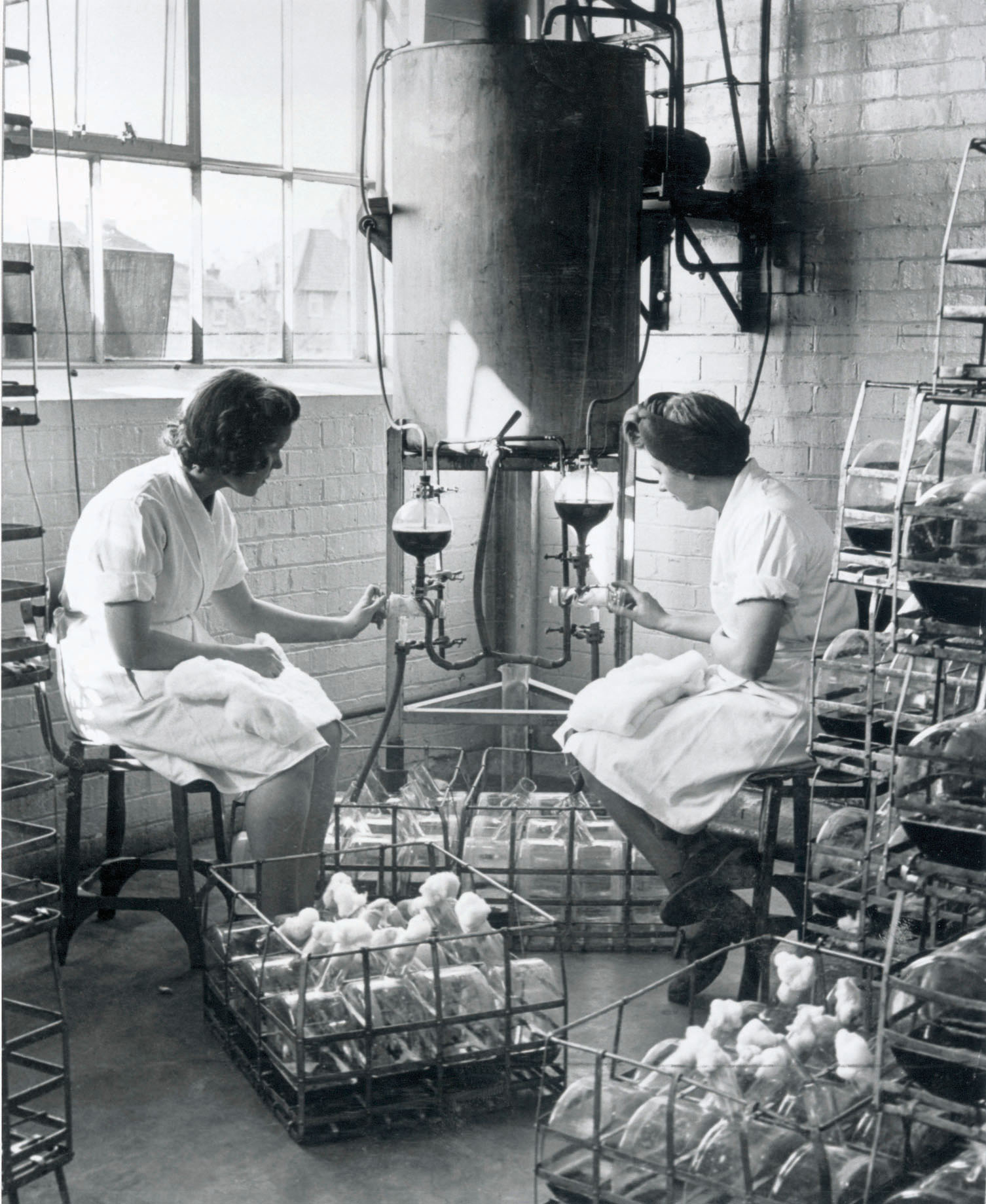FROM FUNGUS TO PHARMACEUTICAL

On September 1, 1939, Germany invaded Poland, plunging the world into war for the second time in a generation. With the horrors of World War I seared into memory, many feared the death toll that would result from the hostilities. Millions of soldiers and civilians had died in World War I, many not as a result of direct combat injuries but from infected wounds. With few other antibacterial medicines available, penicillin suddenly became the focus of research during World War II.
In 1938, Ernst Chain, a German-Jewish biochemist, was working in the pathology department at Oxford University, having fled Germany for England in 1933 when the Nazis came to power. Both Chain and his supervisor, Howard Florey, were interested in the biochemistry of antibacterial substances. Chain stumbled across Fleming’s 1929 paper on penicillin and set about trying to isolate and concentrate the active ingredient from the mold, which he succeeded in doing by 1940. Chain’s breakthrough allowed Florey’s group to begin testing the drug’s clinical efficacy. They injected the purified chemical into bacteria-infected mice and found that the mice were quickly rid of their infection. Human trials followed next, in 1941, with the same remarkable result.
As encouraging as these results were, there was one nagging problem: it took up to 2,000 liters (more than 500 gallons) of mold fluid to obtain enough pure penicillin to treat one person. The Oxford doctors used almost their whole supply of the drug treating their first patient, a policeman ravaged by a staphylococcal infection. The team stepped up their purification efforts—even culturing the mold in patients’ bedpans and repurifying the drug from patients’ urine—but there was no way they could keep up with demand.
51

The turning point came in 1941, when Oxford scientists approached the U.S. government and asked for help in growing penicillin on a large scale. The method they devised took advantage of something America’s heartland had in abundance: corn. Using a by-product of large-scale corn processing as a culture medium in which to grow the fungus, the scientists were able to produce penicillin in much greater quantities.
At first, all the penicillin harvested from U.S. production plants came from Fleming’s original strain of Penicillium notatum. But researchers continued to look for more potent strains to improve yields. In 1943, they got lucky: researcher Mary Hunt discovered one such strain growing on a ripe cantaloupe in a Peoria, Illinois, supermarket. This new strain, Penicillium chrysogenum, produced more than 200 times the amount of penicillin as the original strain. With it, production of the drug soared. By the time the Allies invaded France on June 6, 1944–D-day–they had enough penicillin to treat every soldier who needed it. By the following year, penicillin was widely available to the general public.
The optimism with which patients and doctors greeted the new bacteria-killer cannot be overstated. “Penicillin seemed to justify a carefree attitude to infection,” says science historian Robert Bud, principal curator of the Science Museum in London. “In Western countries, for the first time in human history, most people felt that infectious disease was ceasing to be a threat, and sexually infectious disease had already been conquered. For many it seemed cure would be easier than prevention.”
Yet, as effective as penicillin was, it was effective only against certain types of bacteria; against others, it was powerless.